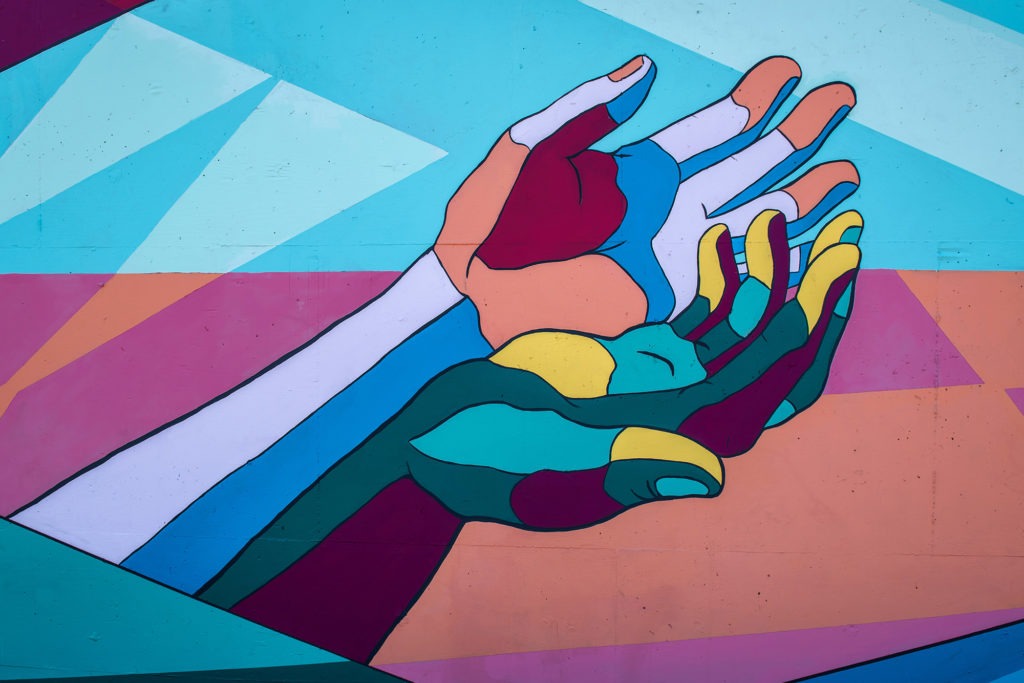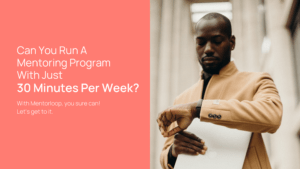
What is Inclusive Mentoring?
Inclusive mentoring is an approach to mentoring that prioritizes diversity, equity, and inclusion. It aims to create mentorship relationships that are open and accessible to individuals from all backgrounds, regardless of their race, gender, sexual orientation, age, disability, or other characteristics. The goal of inclusive mentoring is to ensure that everyone has equal opportunities to benefit from mentorship, and it recognizes the value of diverse perspectives and experiences in the mentorship process.
Some of the key principles of inclusive mentoring are:
- Diversity and Representation: Inclusive mentoring programs actively seek to involve mentors and mentees from diverse backgrounds to reflect a wide range of perspectives and experiences.
- Equity: Inclusive mentoring strives to provide equal access to mentorship opportunities, recognizing that systemic barriers may exist that prevent some individuals from accessing mentoring relationships.
- Cultural Competence: Mentors in inclusive mentoring programs are encouraged to be culturally competent, which means they are aware of and sensitive to the cultural differences and needs of their mentees.
At Mentorloop, we believe that the right connection can change your life. That’s because we’ve found that the best personal and professional growth is achieved through human connection, knowledge exchange and shared experiences. This is why we’ve dedicated ourselves to making these connections more accessible to as many people as possible so that every individual can thrive. How do we do it? By ensuring both equity and equality are in play in the way we make mentoring matches, making way for more inclusive mentoring experiences for all.
The Importance of Equity and Equality
The right mentoring program should level the playing field to empower entire cohorts of people: workplaces, member associations, social groups and educational institutions. Equality should be a cherished value so that every individual can thrive—whoever they are, whatever their background, however they worship or whomever they love. But we can’t arrive at equality without its often-forgotten partner, equity.
Equity and equality are two strategies we can use in an effort to produce fairness in our workplaces.
Equity is giving everyone what they need to be successful. Equality is treating everyone the same. Equality aims to promote fairness, but it can only work if everyone starts from the same place and needs the same help. At first glance, equity may appear ‘unfair’, but it actively moves everyone closer to success by levelling the playing field.
At the end of the day, you can’t have one without the other if you’re building a diverse and inclusive workplace.
Eliminating Unconscious Bias for More Inclusive Mentoring
Not everyone starts at the same place, and not everyone has the same needs. That means that in order to create an inclusive mentoring program, we need to eliminate unconscious bias, ensure diversity is present and—even more so—that being inclusive is at the very top of everyone’s priority list.
When organisations leave mentoring to happen on its own rather than using algorithmic matching, biases are reinforced. The same cookie-cutter people of influence are elevated, and privileges are reinforced. It’s often simply because people are blindly biased to warm to or select someone who reminds them of themselves at an earlier stage.
The Benefits of Equitable Algorithmic Matching
Most mentoring programs either give participants a compatibility score that’s based on similarities between profiles or pair up people based on skills gaps (e.g. the person who wants to learn to dance salsa is paired with the person who can teach salsa dancing).
The problem with this is that it’s regressive: the person who’s at the top of the list will likely get the best match, meaning Adam Anderson is getting a far better experience than Xavier Zander. That’s because the first two people to match (person A and B) get the best match possible (100%), but the third person (person C) may have been a 100% match with person A. But they don’t get to match with them, so they get the second-best match: person D (80%). The further you go down the list, the worse it gets—the last two people are probably not even worth pairing.
Another issue is that when program coordinators pair people, they often are swayed by their preconceived notions of a person (e.g. the person’s skills, personality type, the colour of their skin, gender, sexuality, body type even!).
Thankfully, algorithmic matching can solve these problems by removing unconscious bias and helping program coordinators everywhere run more inclusive and equitable mentoring programs.
Selecting the Right Mentoring Software to Enable Inclusive Mentoring
Matching within a mentoring program needs to achieve two critical things:
- Ensure it can surface the best quality matches for participants, and
- Ensure that the whole cohort gets an equitable match.
A mentoring solution provider that champions both equity and equality should have these values woven into every aspect of their offering, team culture, and approach to work—both internally and externally.
The program’s algorithm should look at all of the individuals and ensure everyone receives an equitable match. So, even if a person doesn’t get a mentoring partner that’s a 100% match for them, they’ll get close. The people last in line will also have the same level of opportunity.
At Mentorloop, our algorithm matches people not only on what their interests or goals are, but they’re also matched in relation to the rest of the cohort. This is to ensure that every individual within an organisation receives an equitable match.
What’s more, as new matches are made every day, the latest version of our data-driven matching algorithm continues to learn through a feedback loop, improving accuracy and projections for new pairings in the future.
Keen to learn more about matching on Mentorloop? Check out the different matching types available on the platform and how they work:
Ultimately, through Mentorloop’s accessible approach to mentoring, organisations and their people (members, students, employees) will achieve better results in both work and life.
Ready to get your mentoring program started? Learn more about the five key decisions you need to make in order to successfully match, build momentum, and measure a program.





